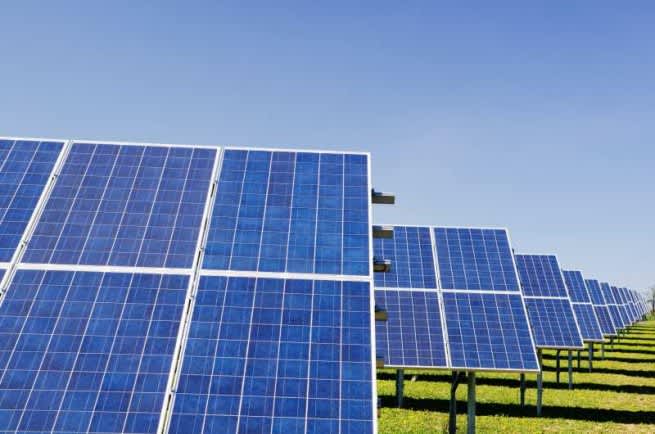Your Guide to a More Energy-Efficient Home
Introduction
Smart technology, artificial intelligence, and construction innovation are significant advantages to homeowners building or renovating their homes in modern times. SaaS and digital apps are part and parcel of our lifestyles, helping us to contribute to the environment - making the air, water, and land around us greener. While this may appear publicly generous, the beauty of it all is that our personal quality of everyday living escalates substantially. Saving hard-earned money while doing your bit for Mother Earth's health is a win-win situation.┬Ā
Some relatively small, unobtrusive actions make a massive energy efficiency difference without turning your routines and schedules upside down. However, this list includes low-cost and big-ticket items that merge for a comprehensive solution, keeping in mind there are long-term benefits for your family in the mix.
┬ĀSmall ticket actions
Raise your thermostat reading when away from home.
In Florida (according to FPL - Florida Power & Light), homeowners can save 5% on electricity cooling costs for every degree they push up their thermostat, and vice versa in winter. Similar metrics apply to multiple other states.┬Ā
Now, we're not advocating you shiver or sweat to save money. The idea is to seamlessly adjust temperature controls when residents are at school, working, on vacation, or not at home (for any reason). Moreover, using a smart app, one can control thermostats from anywhere, creating the flexibility you need to be comfortable indoors when in the abode and conserve energy when not.
┬Ā
Improve your lawn care for less cost.
A compost pile in your backyard is perfect for fruit and vegetable waste accumulation (versus trashing and sending it to the landfill) - a significant environmental advantage. However, we recommend a small investment in a compost bin (the tumbler-type is best) that speeds up the decomposition process and keeps the yard section neat and vermin-free.┬Ā
The innovativeness behind these containers allows them to be continuous, meaning there's no limit to the waste you can add to them or the compost quality based on a set mix of ingredients. The homeowner advantage is a ready fertilizer supply for the lawn, flower beds, and trees growing in the garden.
┬Ā
Install low-flow showerheads in all bathrooms.┬Ā
Saving water lowers utility bills and conserves this natural resource that's growing scarcer as climate change accelerates. We recommend installing your showerheads with aerators plus embedded low-flow technology. The latter saves money by mixing the aqua stream with air, so less water registers on your meter (and hence cuts your water bill).┬Ā
However, it doesn't mean a pressure drop - the feel against your skin once you turn the shower on. On the contrary, it may improve the feeling of water pressure. This move will shape the stream in such a way as to eliminate random splashes away from the body with a smoother sensation.┬Ā
If you want to take this further, consider installing aerators into faucets. The one caveat is that aerators require 6-monthly maintenance by dismantling them, soaking them in vinegar for five minutes (or so), and giving them a toothbrush scrubbing. Still, this minor inconvenience is worth the overall energy-saving benefits.
┬Ā
Seal residence windows
Air conditioning inefficiency connects closely to air leaks and heat infiltration in and around the windows and sliders in your home. So, address drafty windows by following a few YouTube handyman guidance tips and adding weatherstripping around the frames. How? It involves calking cracks in the drywall with silicone beading plus applying shrink film to windows (thus lowering the sun heating from outside into the living spaces). Anything and everything one can do to reduce air conditioning burdens cuts into utility bills, and this tip is one of the best.
┬Ā
Limit space heater use in cold weather.
Space heaters, in general, are notoriously energy-inefficient - mainly electric. Energy efficiency is one thing - judged by the space the selected unit heats per watt (otherwise known as heating capacity). We advise a 1,500-watt heater capable of warming up 150 square feet of living area (i.e., one square foot of heating per 10 watts).┬Ā
However, the energy benefits and maximization emerge from the heater's features, such as auto on/off settings, an adjustable thermostat (often connected to infrared technology), and tilt/tip sensors. These options enable the heater to switch to heat or neutral appropriately, deliver improved safety, and fit in with remote controllability.┬Ā
For example, Dr Infrared's 1,500-watt space heater goes from zero to hot in the blink of an eye, thus cutting energy costs, and will turn off when it senses nobody's in the room. It also has three flexible temperature registers plus a built-in humidifier - an incredible all-in-one value for $100 in an attractive cherry wood casing.
┬Ā
Turn Off Unnecessary Water
Did you know a faulty toilet cistern typically leaks 8 gallons of water per hour, 200 gallons daily, or 6,000 gallons monthly - a $70 unnecessary expense in wasted utility? Extrapolate this to include a faulty irrigation system; unintendedly, one's annual water bill could exceed expectations by $1,000. Also, bathing uses 75 gallons of water compared to taking a shower (17.2 gallons), and half-laundry loads in your washer use the same amount of water as full ones. Therefore, making more efficient choices in hygiene and laundry conserves water and saves money.
┬Ā
Replace incandescent bulbs throughout the home.
In 2014, manufacturers phased out 60- and 40-watt incandescent light bulbs, following on from the 100- and 75-watt versions before that. LED lights have proved to be a noteworthy replacement, saving the average household $225 in energy costs annually.
Additionally, take maximum advantage of natural light by opening shades and exposing rooms to the sun for long hours, thus erasing the need to switch on lights. Moreover, plan your lighting by room, with expansive room spaces favoring bigger, brighter illumination and installing only lamps and desk lights in small rooms.┬Ā
Finally, dimmers are inexpensive mechanisms that can save you bundles of dollars (up to 20% of lighting costs by dimming to 75% of average brightness.)
┬Ā
Install a Storm Door
┬Ā
This is one that many homeowners bypass when considering energy economics. Nonetheless, one can fit it into the side or back of the house. Typically constructed from low-emissivity glass or a protective coating, it dramatically impacts energy saving for any single-family home. How? Providing a layer of protection in cold and hot weather, thus reducing energy loss by up to 50%. These doors are long-lasting (25 to 50 years), and prices start as low as $75.
Big-Ticket Ideas
Floor, attic, and basement insulation
The EPA estimates that heating and air-conditioned cooling improve by 15%, with a drop in energy costs of 11% by insulating attics, basements, floors, and crawl spaces. Insulating an attic alone, on average, is $2,380. It's possible to obtain accurate energy savings (projected) to assess the payback period, which may be surprisingly short in many cases. Another benefit of contracting comprehensive insulation is increased asset value as a resale feature.┬Ā
┬Ā
Installation of┬Ā solar panels
This is the most significant lifestyle changer to hit the residential market in generations. Of course, it makes sense, with so much sunshine in states throughout the US and grid power costs rising yearly. Installation of solar panels on roofs with a battery for energy storage is a sophisticated convenience today, covered by considerable government rebates and subsidies. It removes the household from coal and gas dependence, thus culminating in an impressive environmental contribution. In addition, technologies exist where homeowners can sell their excess solar energy back on the grid to neighbors.
When one considers the net investment after deducting green support dollars as described, compared to cost savings over time, it makes sense to most consumers. The choices boil down to panels or installing a striking solar panel roof via products emerging from Elon Musk's companies and close competitors. Notably, the deductions vary considerably between states and counties within the same state. Check these out carefully before signing the bottom line. Finally, the industry has numerous scams that prey on naive homeowners, so investigate client reviews with a fine tooth comb. Also, Consider the dos and don'ts of home solar panel systems.
Interestingly, solar consultants are at front and center of the energy transition and can implement an energy audit to find every potential saving from corner to corner. Of course, their interest focuses on selling you solar power, but you can learn much from an evaluation of this nature.
┬Ā
Buy Energy Star Products
Energy Star products, covering refrigerators, televisions, stoves, washers, and air conditioners, are fully vested in energy efficiency to meet EPA standards that beat other appliances by 10-50% less energy usage, thus reducing greenhouse gas emissions and cutting utility bills.
Conclusion
From the eleven items above, it's evident that there's no single contributor to energy savings in your home. On the contrary, it combines small, inexpensive activities in unison with substantial technology investments. The optimal route is a new construction with broader options, where you can install the most energy-efficient materials from scratch. However, for most of us living in pre-2000 houses, condos, and apartments, the landscape is severely more limited, and many of the tips fit into that scenario like a hand in a glove. Finally, it depends crucially on harnessing family cooperation to make it all happen on a scheduled and daily basis.
More from this category
Housing options in Boca Raton Florida
109 0 Zev Freidus 4 years ago in Real Estate
Living the Delray Beach Lifestyle
126 0 Zev Freidus 4 years ago in Real Estate
A Home Buying Guide for Teachers
1028 0 Zev Freidus 2 years ago in Real Estate
17 Celebrities Who Live In Florida and their mega mansions
1090 0 Zev Freidus 2 years ago in Real Estate




